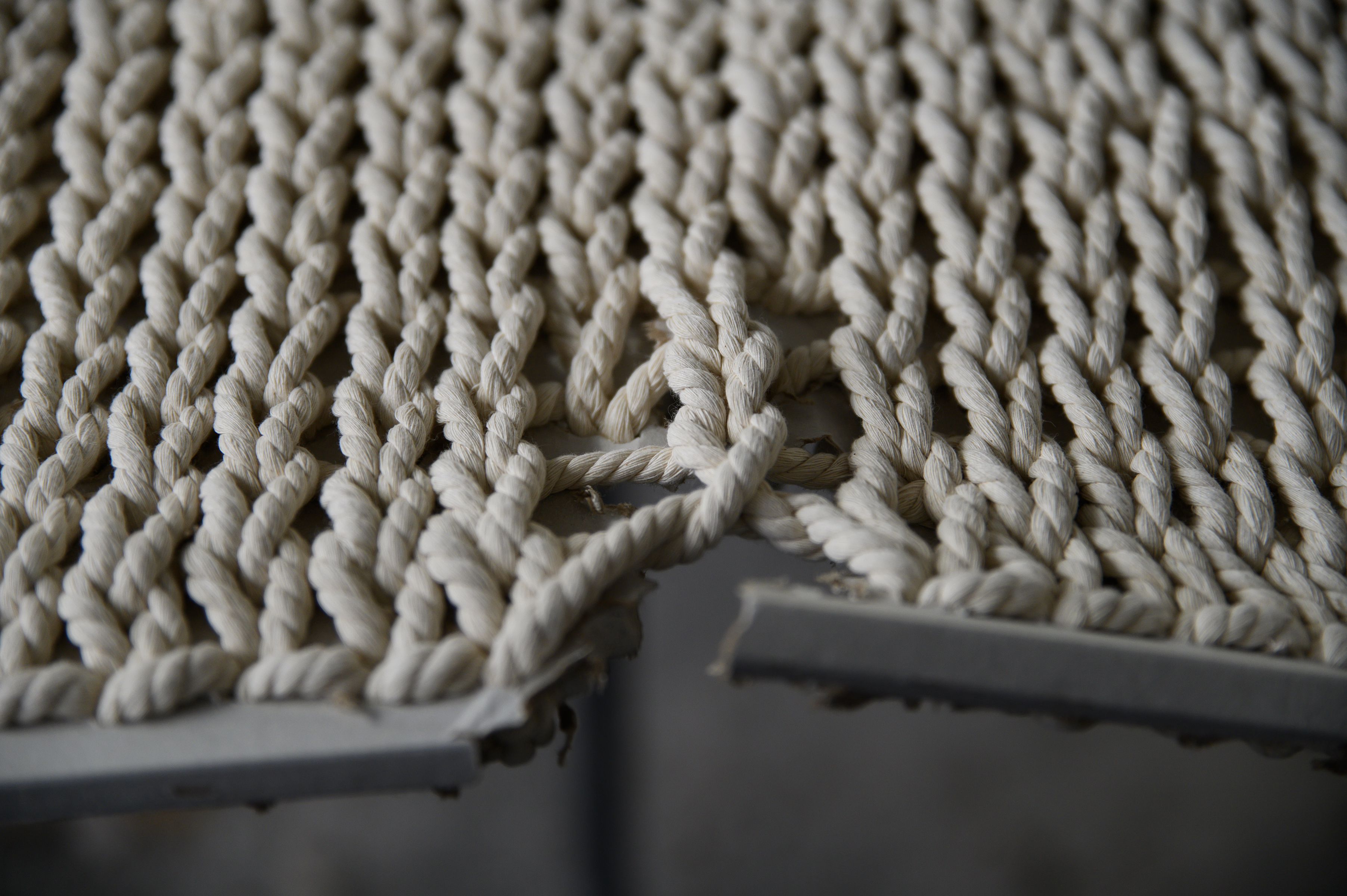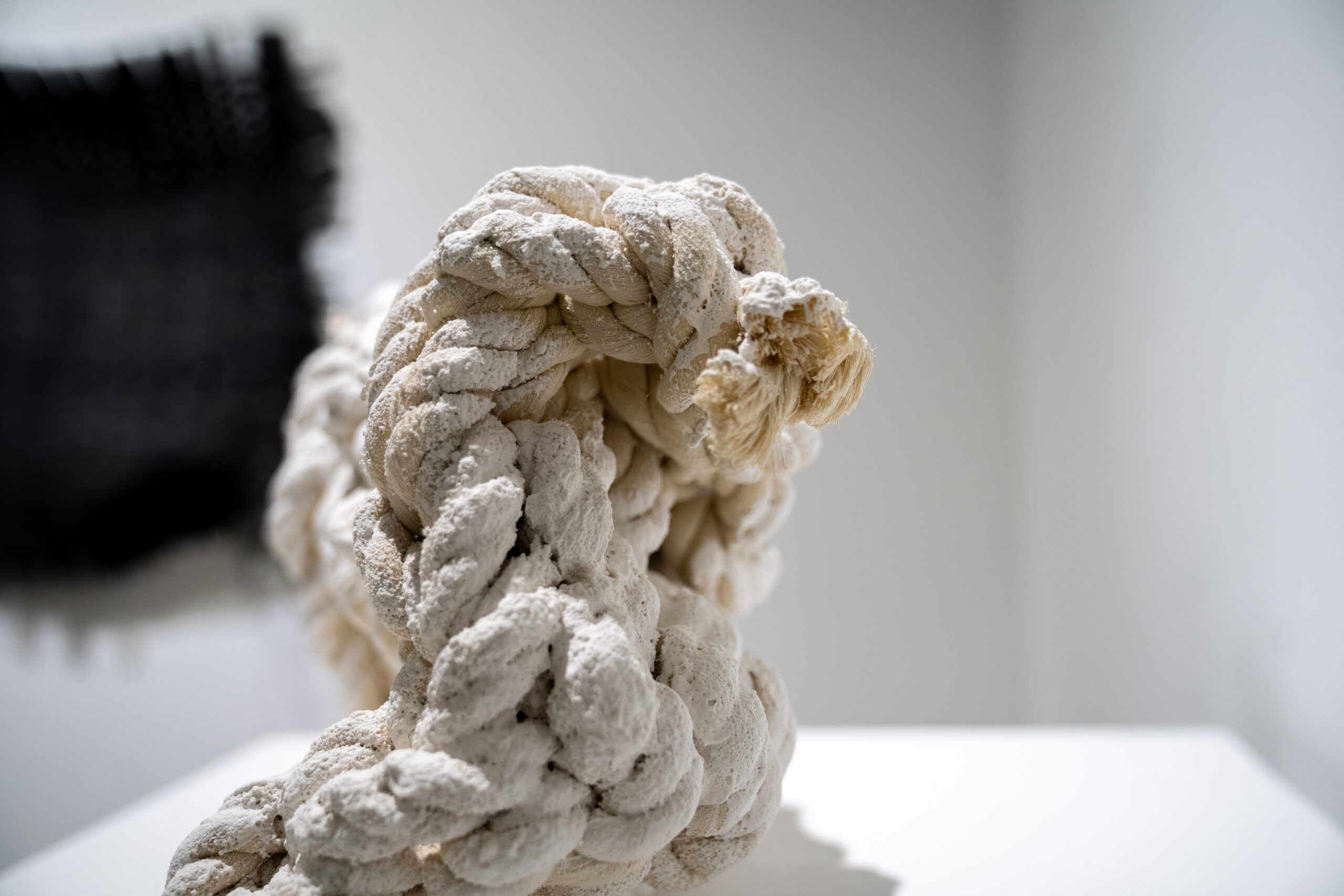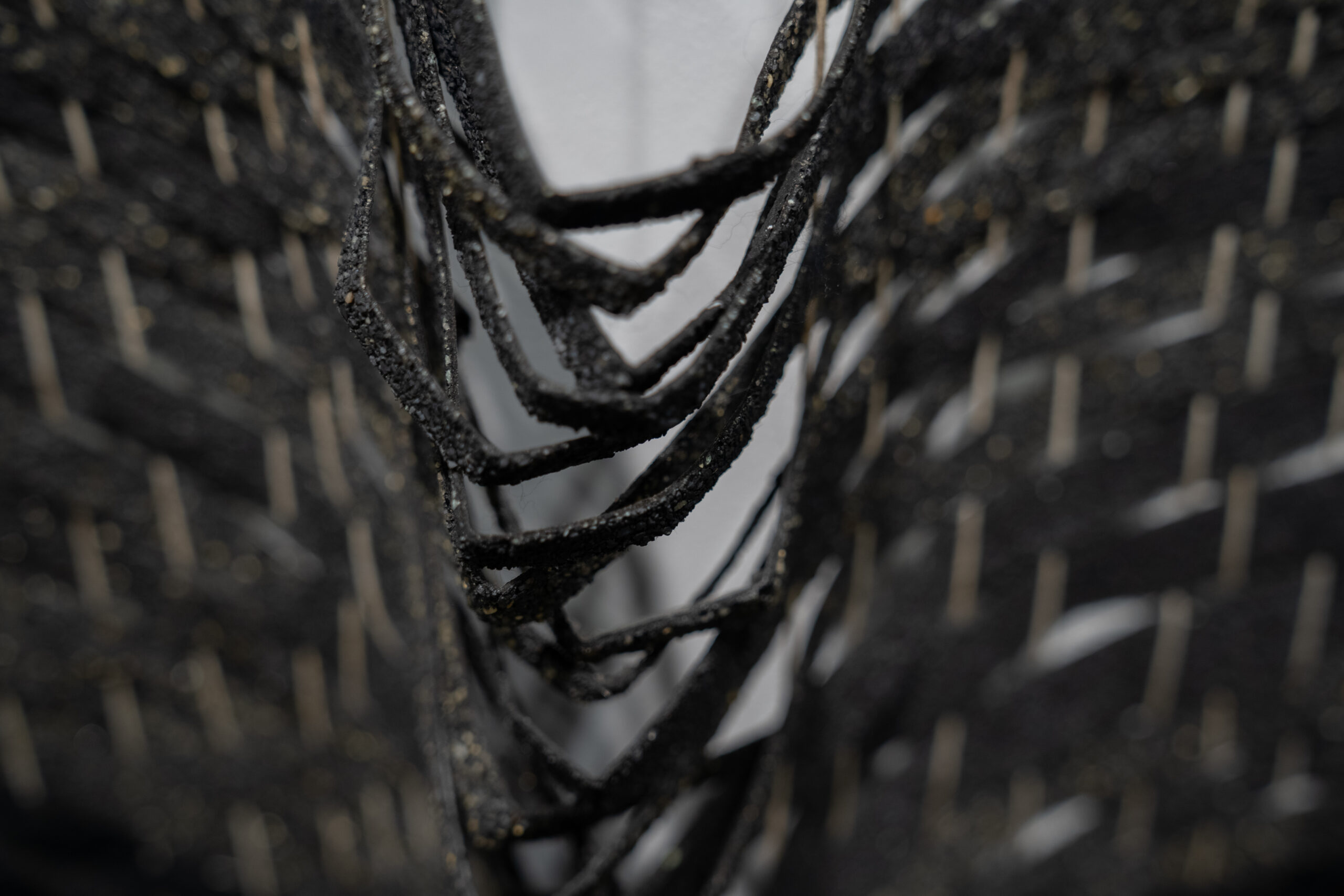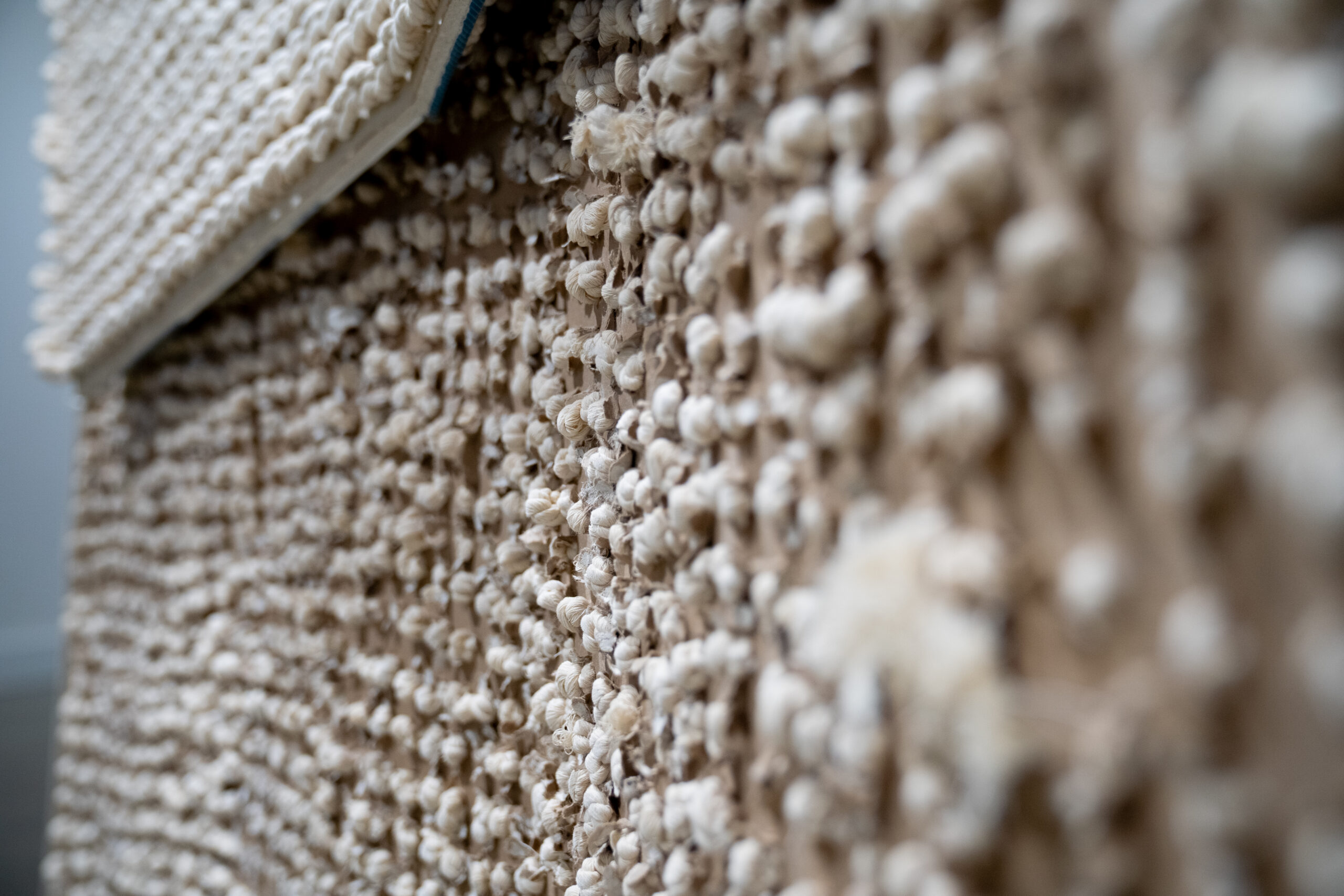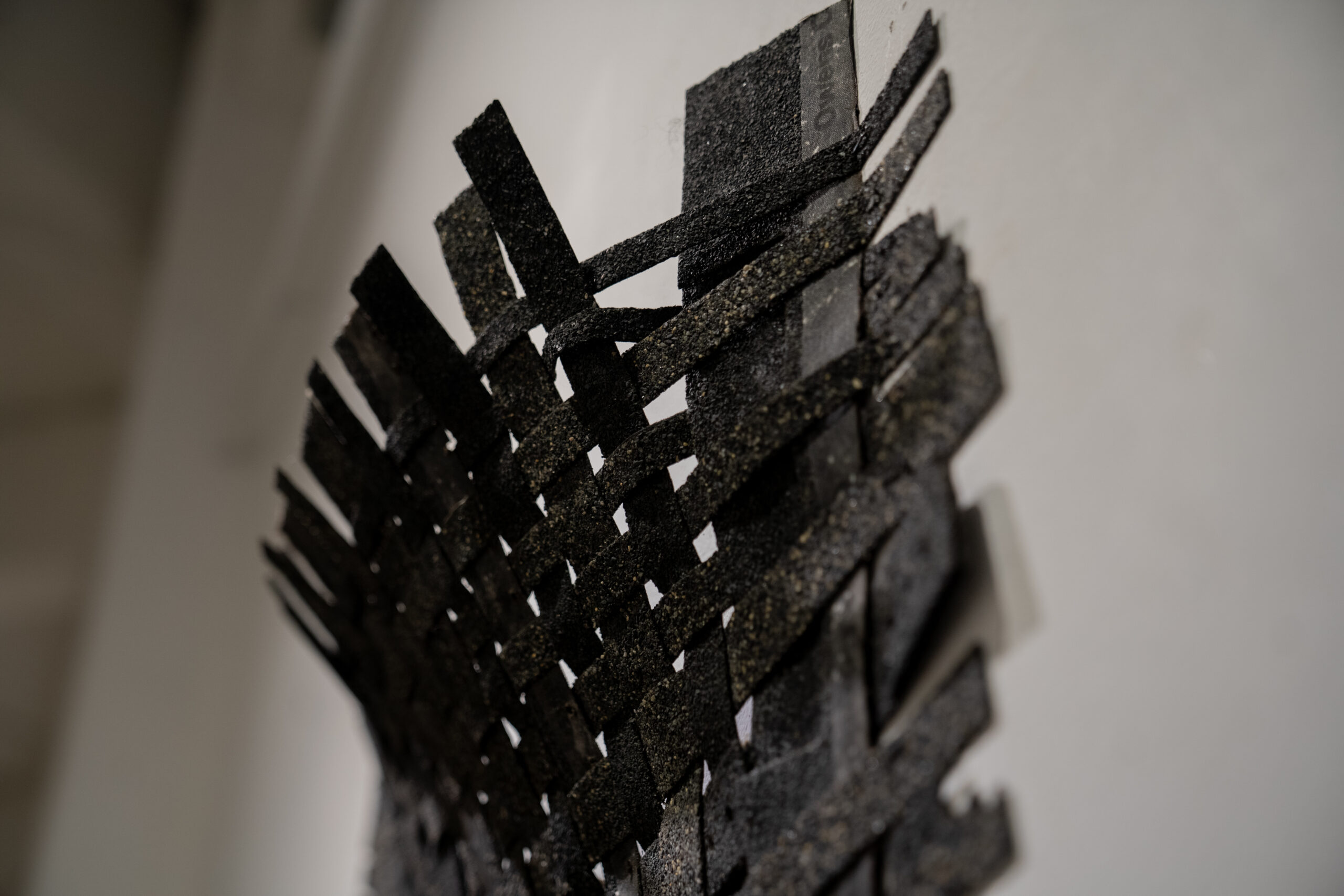Date/Time
Date(s) - 07/28/2023 - 09/01/2023
12:00 am
Location
Buffalo Arts Studio
Categories
Opening Reception, Friday, July 28, 2023, 5:00—8:00 pm
Part of M&T Fourth Fridays at Tri-Main Center
Visible Record
Curatorial Essay by Shirley Verrico
Erin Kearney’s work is an exploration of what it is to inhabit both a physical body and physical space simultaneously. Kearney’s fixation with this parallel began with the continuous repairs in her family’s 100-year-old farmhouse. Even as a child, Kearney saw that although the many cracks in the old plaster were lovingly repaired, the structure could never be fully restored to its original state. Kearney sees similar limits within the body’s repair mechanisms. Like the skin that grows over a cut and forms a scar, the patch and paint becomes a visible record of the original wound as well as the limitations of repair.
Kearney’s interest in domestic spaces includes domestic fiber processes; skills passed down and learned by generations of women in her family. Kearney employs processes rooted in craft including weaving, knitting, and crochet, which she marries with construction materials such as drywall, insulation foam, and concrete. While actively engaging with these disparate materials, Kearney reflects on the questions that emerge from living amidst countless building projects: What is on the other side of walls? Where is the hidden labor within the spaces we inhabit? What are the threads that connect the architecture we live in and the bodies we inhabit? What are the connections between the structures we live in and the things and beings we live with, and how can the act of making art blur the lines of both?
A central work in Kearmey’s exhibition Living In and With seems to consider all of these questions. To Be, To Long is a full 4 foot by 8 foot piece of drywall unmade and remade into a 5 foot, 10 inch by 4 foot free standing sculpture. Drywall (gypsum board) is used in the construction of interior walls and ceilings. In the mid-20th century, drywall construction became popular in North America as a time and labor-saving alternative to lath and plaster. The origins of this material as a “labor-saver” is not lost on Kearney, who begins her process by “unmaking” the familiar construction material by drilling into the drywall along the full length and width of the board. These rows of holes form an X and Y axis along which Kearney attempts to echo the straight edges of the manufactured sheet rock. Working with the drywall upright against the wall of her studio, Kearney’s body is unable to match the factory’s standards of perfection. As Kearney continues to perforate the drywall using the handheld drill, the holes chart the limitations of her body due to the fatigue of the intense labor.
The structure of the drywall is also changed by the holes, causing sections to sag and crack even as the artist lays the sheetrock on top of a table to work. Through the holes, Kearney crochets cotton rope, working to maintain consistent tension and even stitches. As each row is fastened to the previous, the tension of the cotton rope begins to curve the board. This labor is taxing on both Kearney’s body and the compromised drywall. When Kearney had filled all the holes and covered the visible surface with the crochet pattern, she and a team of installers lifted the finished sculpture onto the 4 foot edge. Raising the work off the table revealed the “underside” of the crochet process; a surface covered in uneven knots and frayed thread. Kearney believes it is this long-unseen side that most deeply reflects her questions. When To Be, To Long was installed upright, as Kearney has always intended it to be, the perforated drywall could no longer support its own full weight, causing the top third of the sheet rock to buckle and collapse. The crocheted knots held the two pieces together even as the gypsum and paper did not. The redistribution of weight as well as the slight bow caused by the collapse allows To Be, To Long to stand vertically. It also allows the viewer to see both sides of the work simultaneously.
Kearney embraces other materials in this exhibition as well. The 7 foot by x 9 foot wall work, Domesticus (2023) is a site specific installation made from cotton twine, alpaca wool, and roofing shingles. Kearney has cut the shingles into long strips, weaving them with the wool into a dark, undulating strata. Kearney has created a form that seems strangely organic in its imperfections, like viewing a cross section of layered sedimentary rock. In contrast Threadlike (2023), only 12 inches tall, is made from gently curved reeds inserted into a bit of broken concrete.
All the work in Living In and With connects back to the body and the labor of inhabiting the word encumbered by our imperfect physical form. The beautiful pattern created by the crocheted rope covering To Be, To Long recalls the texture of skin on work-worn hands. The looping reeds of Threadlike suggest tangling hair, curling from heat and sweat. The puckers woven into Domesticus echo the fleshy wrinkles covering bent elbows and knees. Together, this work is a visible record of Kearney’s hidden labor; her hands knitting and knotting the thread, her knees and elbows bending to weave the roof shingles, and her hair slipping from her braids as she works.
Biography:
Erin Kearney is a multidisciplinary artist and educator based in Buffalo, New York. She received her BFA in Sculpture from Alfred University and MFA in Art and Technology from the Ohio State University. In 2021, Kearney joined Buffalo Arts Studio as a Studio Artist, and quickly became a part of the Board of Directors, where she now serves as Vice President.
Erin Kearney received funds from the Burchfield Penney Art Center Artist Support Grant and the Statewide Community Regrant program, a regrant program of the New York State Council on the Arts with the support of the Office of the Governor and the New York State Legislature and administered by Arts Services Inc.

